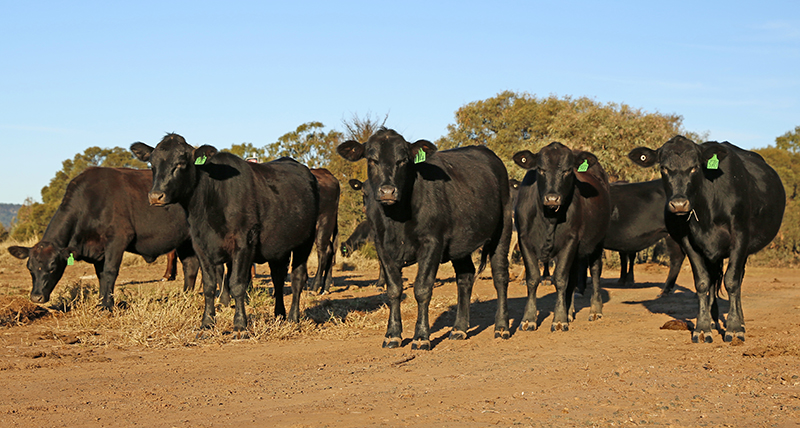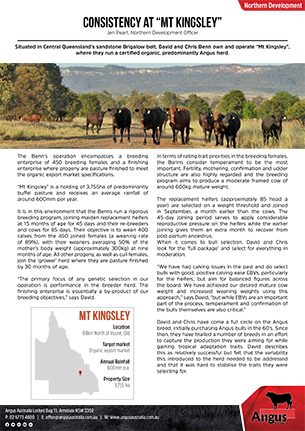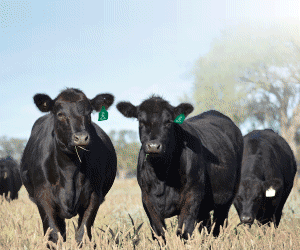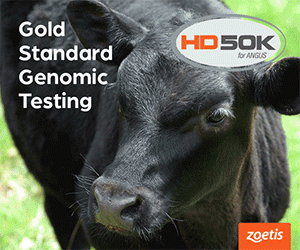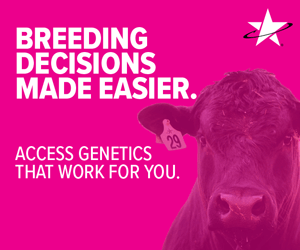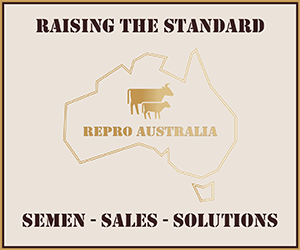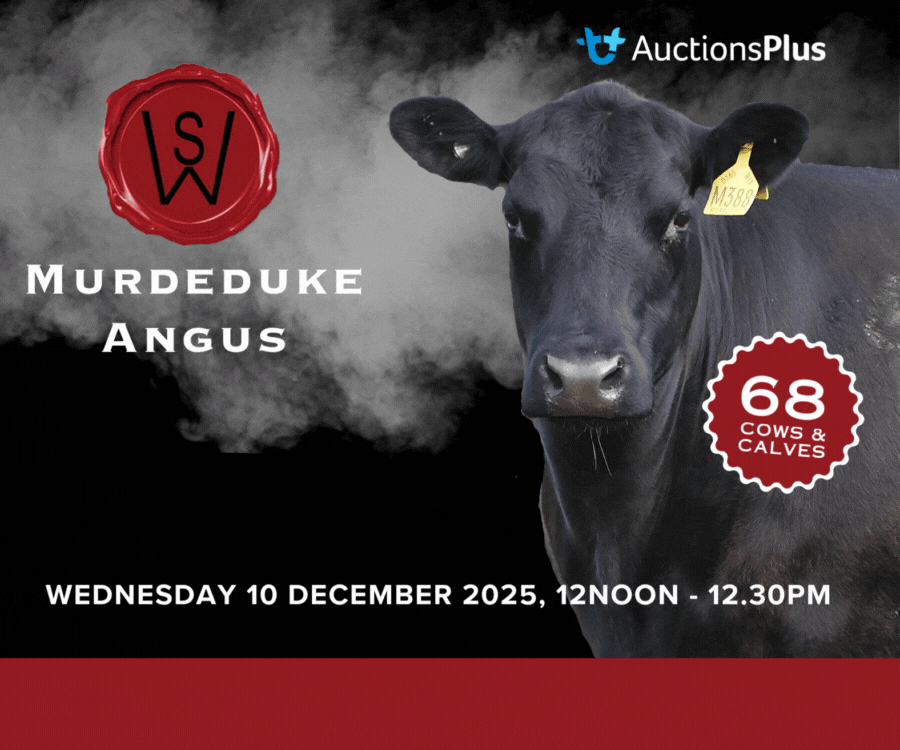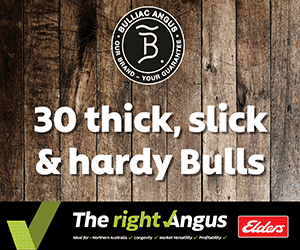Situated in Central Queensland’s sandstone Brigalow belt, David and Chris Benn own and operate “Mt Kingsley”, where they run a certified organic, predominantly Angus herd. The Benn’s operation encompasses a breeding enterprise of 450 breeding females and a finishing enterprise where progeny are pasture finished to meet the organic export market specifications.
“Mt Kingsley” is a holding of 3,755ha of predominantly buffel pasture and receives an average rainfall of around 600mm per year.
It is in this environment that the Benns run a rigorous breeding program, joining maiden replacement heifers at 15 months of age for 45 days and their re-breeders and cows for 85 days. Their objective is to wean 400 calves from the 450 joined females (a weaning rate of 89%), with their weaners averaging 50% of the mother’s body weight (approximately 300kg) at nine months of age. All other progeny, as well as cull females, join the ‘grower’ herd where they are pasture finished by 30 months of age.
“The primary focus of any genetic selection in our operation is performance in the breeder herd. The finishing enterprise is essentially a by-product of our breeding objectives,” says David.
In terms of rating trait priorities in the breeding females, the Benns consider temperament to be the most important. Fertility, mothering, confirmation and udder structure are also highly regarded and the breeding program aims to produce a moderate framed cow of around 600kg mature weight.
The replacement heifers (approximately 85 head a year) are selected on a weight threshold and joined in September, a month earlier than the cows. The 45-day joining period serves to apply considerable reproductive pressure on the heifers while the earlier joining gives them an extra month to recover from post-partum anoestrus.
When it comes to bull selection, David and Chris look for the ‘full package’ and select for everything in moderation.
“We have had calving issues in the past and do select bulls with good, positive calving ease EBVs, particularly for the heifers, but aim for balanced figures across the board. We have achieved our desired mature cow weight and increased weaning weights using this approach,” says David, “but while EBVs are an important part of the process, temperament and confirmation of the bulls themselves are also critical.”
David and Chris have come a full circle on the Angus breed, initially purchasing Angus bulls in the 60’s. Since then, they have trialled a number of breeds in an effort to capture the production they were aiming for while gaining tropical adaptation traits. David describes this as relatively successful but felt that the variability this introduced to the herd needed to be addressed and that it was hard to stabilise the traits they were selecting for.
Ultimately it was a greater Angus influence that the Benns felt provided the consistency, market flexibility, fertility and temperament they were seeking and has resulted in a progressively greater percentage of Angus being used in their herd.
“When we first started using Angus, sourcing reliable genetics in Queensland was difficult however I think with the reliability of Angus genetics now, we are more comfortable going to a straight Angus herd,” David stated.
“It is not hard to buy consistently quiet Angus bulls. There are now so many good bulls on the market suitable to the Queensland environment, I don’t see a sound argument for not using Angus,” adds David.
When asked if they have seen an uptick in fertility, David and Chris agree that it hasn’t been an uptick as such but the maintenance of performance in shorter joining periods.
Selling into the feeder market is a drought strategy in the Benn’s operation and the market flexibility that Angus provide is something David and Chris value.
“In dry years where we have had to offload to feedlots we found that the demand wasn’t for Bos Indicus cattle,” says Chris, “while you might lose a little bit with the adaptability of a cross breed, we have found that Angus does open up more markets for you and capture the relatively consistent premiums”.
Some of the challenges David and Chris have found running a predominantly Angus herd in Central Queensland have been buffalo fly and blight, with management compounded by the fact they are an organic operation.
“Buffalo fly present the biggest challenge with organics,” says David, “we cull anything that seems susceptible to fly but from my observations between the Charolais, Brangus and Red Polls, the Angus are no more susceptible than other breeds in our herd”.
All-in-all, David and Chris are pleased with the performance of their herd and feel that the constant selection pressure and careful consideration of bulls are leading them closer to reaching their objectives on a consistent basis.
“It has certainly become easier to select for what you are wanting. We are seeing our average weaner weight increase each year and our cows have been performing under significant breeding pressure” states Chris.
“People ask ‘Why Angus?’ and I guess my response to that is ‘Angus have come so far with their genetics in the last couple of decades and our herd is benefiting from those improvements’,” says David.
Angus Australia acknowledges the funds provided by the Australian Government through the Meat & Livestock Australia Donor Company (MDC).
This resource was created as a result of a collaboration between Angus Australia and Meat & Livestock Australia Donor Company (MDC) (Project P.PSH.1063).

